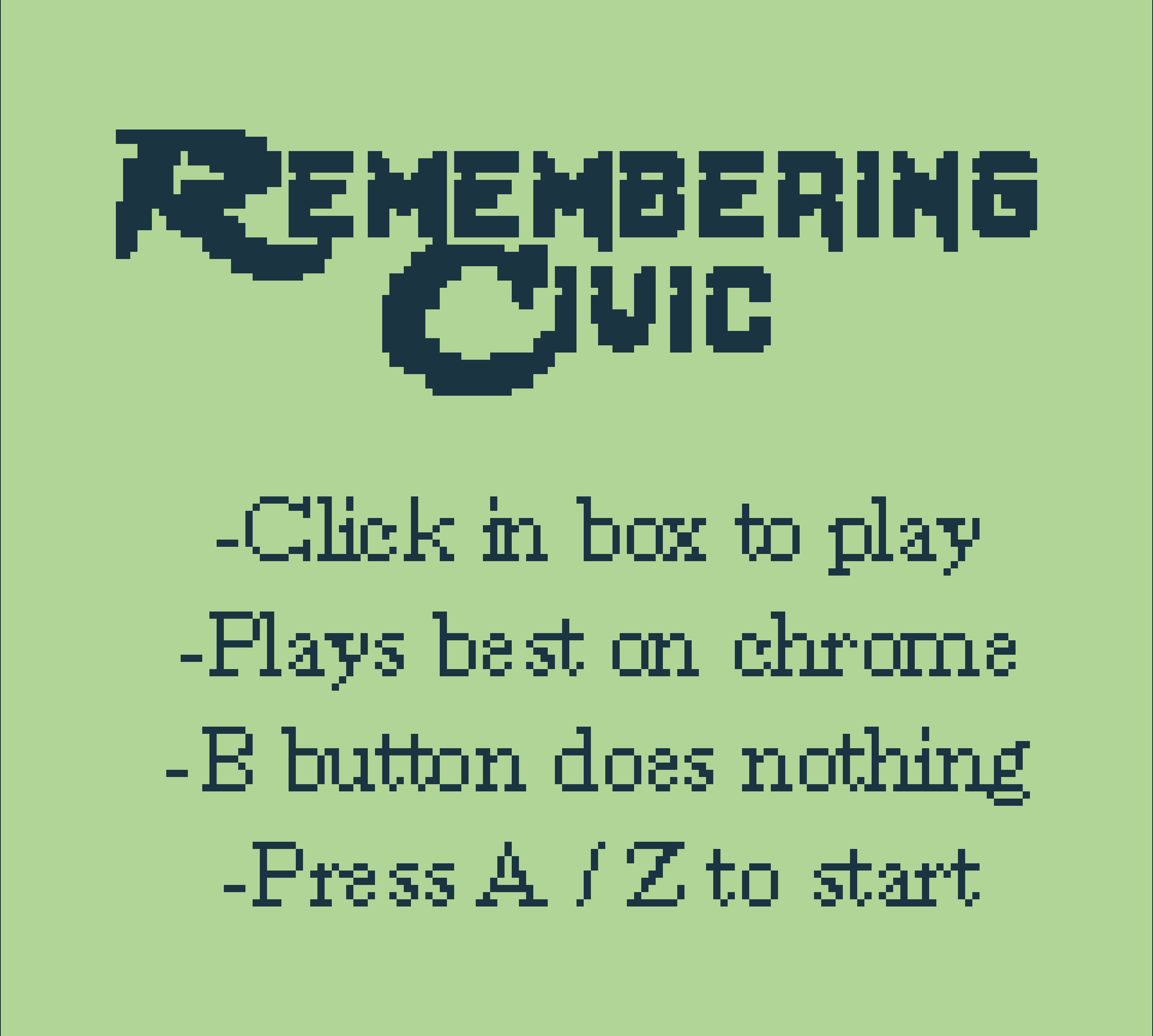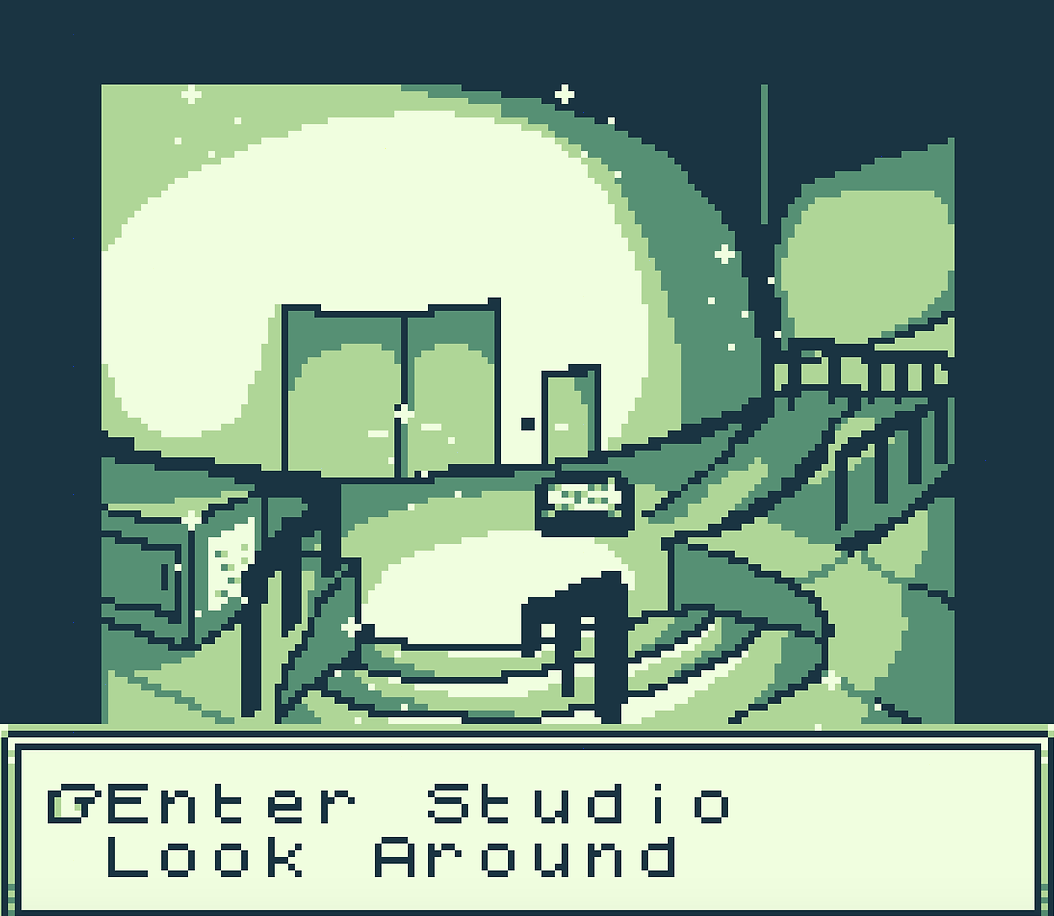Remote Civic Studio
2020


Remembering Civic Studio
2020Game by Joshua Houchlei and Noah Houchlei
I suggest that anyone that plays this game does so on a desktop computer while using chrome.
Joshua Houchlei:
This game is based off of the activities and memories of Civic Studio in 2020. The activities within the game include navigating the studio we inhabited throughout the semester until we were no longer able to due to the COVID – 19 pandemic. Other activities included in the game include, riding a bus to Chicago to visit the SAIC Special Collections Archive. The game intentionally deals with remembering a space we can no longer visit, because remembering it is all we can really do at this point. My memory of the space is incomplete, but that is a part of what makes this experience of recreating and remembering the studio space poignant. Whether people are together or not we all have found a way to connect through memorable activities together.
Accompanying these ideas of memoriesI have trouble grappling with how that art interacts with society, and in some ways how society reacts back. Because of this, I have various questions that I think about as I do any kind of art, and especially the art that I have made in response to the idea of remembering aspects of the civic.
- When confronting ideas of “community” or “public” I have trouble deciding where participation becomes the art itself, and when the civic participation in art becomes the art itself. That blurry area is what I am mostly trying to engage in this work?
- The idea of art “participation” itself is called into question. Why is arts relationship to people a part of what makes it public or considered valuable in public art? This value can be many things. Valuable to one person, many people, or a group of people.
- Speaking to the game experience itself, it functions within the ideas of “community” because of how it was made using the memory of a particular group. It arguably functions in a “public” digital realm as technically anyone with a computer would be able to play.
Thinking about the influence public art can have on a person, the impact is not necessarily judged by what the art does to make the impact, but how the people interact with the object in the community. Not to say that this interaction is not an incredible feat, I just question how much the art plays a role in that dialogue. This questioning may stem solely from my own questioning of interpersonal connectivity. However, to me community art feels more like a navigational tool for people to communicate rather than the “end” whatever that may be to a question. Looking at the Civic Studio experience, that sentiment is almost opposite of this. We have an intensely personal environment with intensely personal interactions to each of us in this class. But would that still be considered a community? Also, to what end does the term community stop and where does it apply? I don’t believe there is an answer to either, and I don’t think that is necessarily a problem. Especially while trying to examine art making on this large of a scale.
Noah Houchlei:
Remembering Civic is simple. Players move around and explore a studio space, clicking on objects and hearing what the memories associated with the studio are. However, within the simple framework of the game lies subtle movements and spatial memories that make the process of Remembering Civic more meaningful to us- the studio as a community.
To anyone outside the studio a lot of the game requires context. For starters, there is no clear objective or goal to complete, there is no winning or losing. Instead, what players are asked to do is wander, explore and click. Within the simple activities lies the personalization of the game, a game that stands as an explorable memory from the point of view of someone in the class. A way to interact with the past and enjoy the memories attached to a specific place. Memories take center stage in this project but remembering all the fine details was a challenge from start to finish and reading over the surveys of my fellow classmates helped flesh out the studio in ways that we could have never achieved. Another example of memory in this project is the room layout. We intentionally only used our own memories and the memory of others. This led to points of frustration as walls and doors constantly shifted around and changed orientation in our memories. Objects and furniture moved back and forth across the floor all looking for the places they belong. The process was frustrating as we were searching through continually shifting memories. However, that frustration helped reinforce the focus on memory in this project, namely that our memory isn’t perfect.
As time passes the imperfections of memory begins to become an enjoyable jaunt through the time spent in the studio. Remembering became a rigorous activity of sifting through my own memories, trying to remember if there was a hole or a door in one particular section of the room or if neither was true and it was a support beam in that location the whole time. This activity of remembering a studio space was more thought provoking than I thought it would be. With the studio space closed for the time being, all we have of it are our memories and hopefully this small game will help those wishing to remember the place better. And who knows, maybe someone with no affiliation to our class will find a small lesson on memory within.